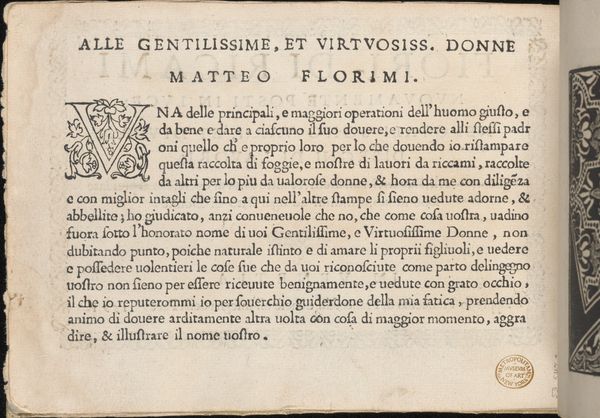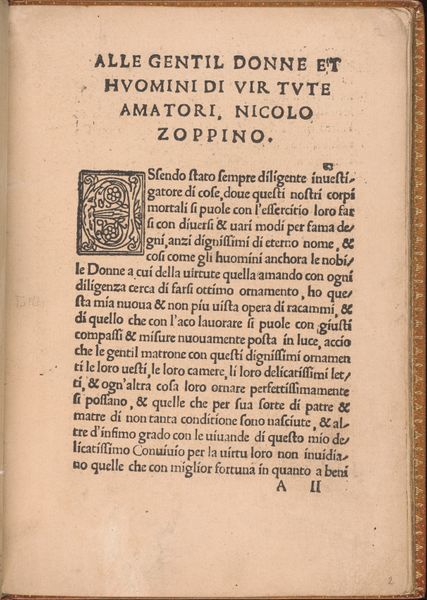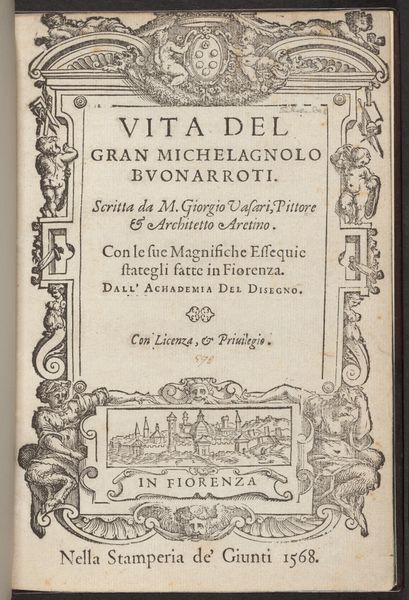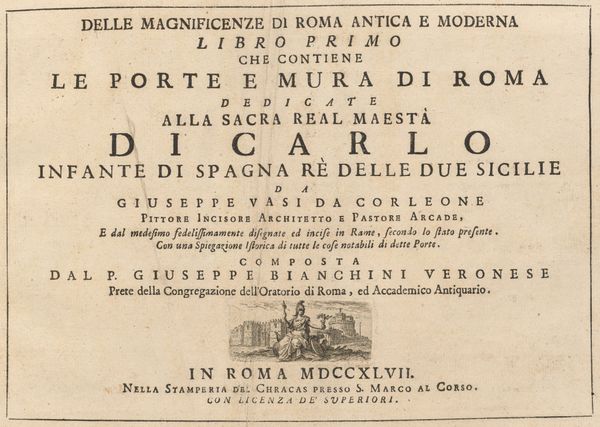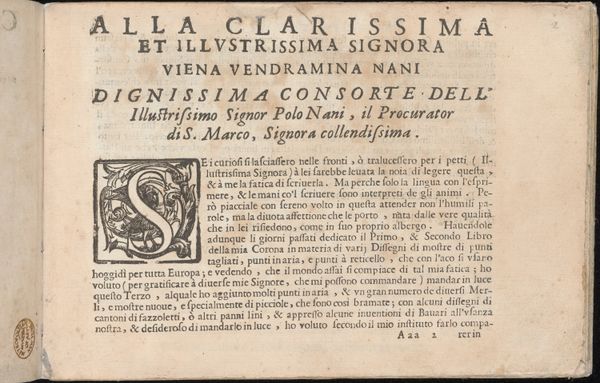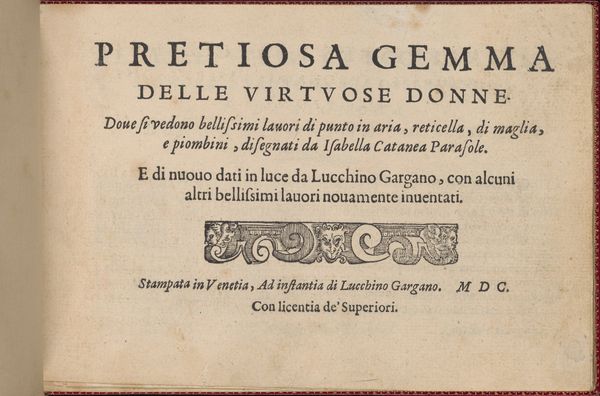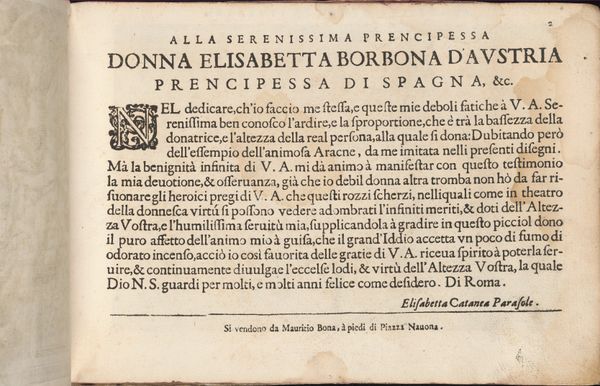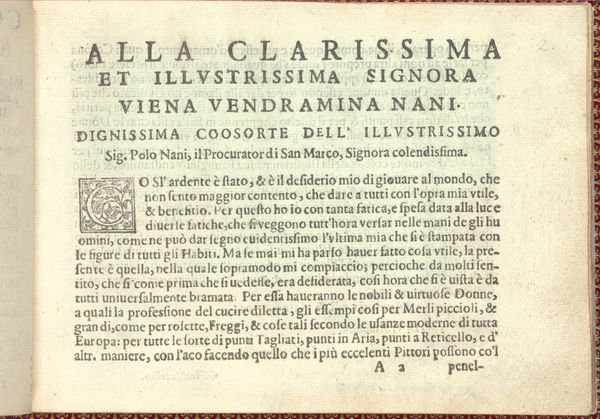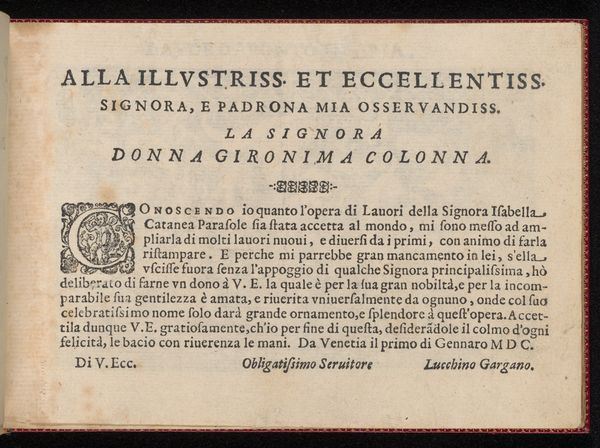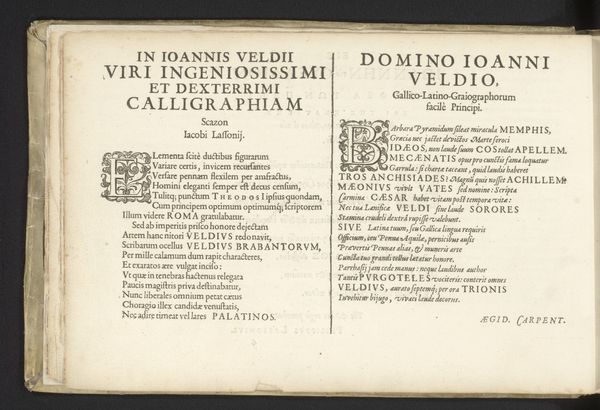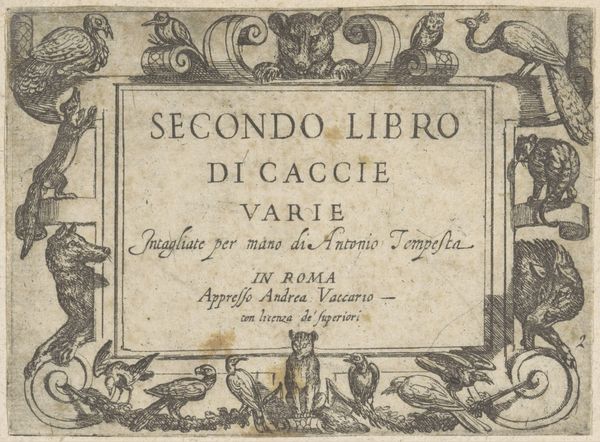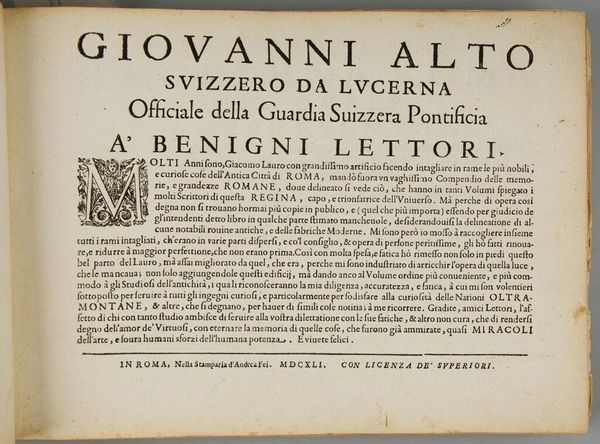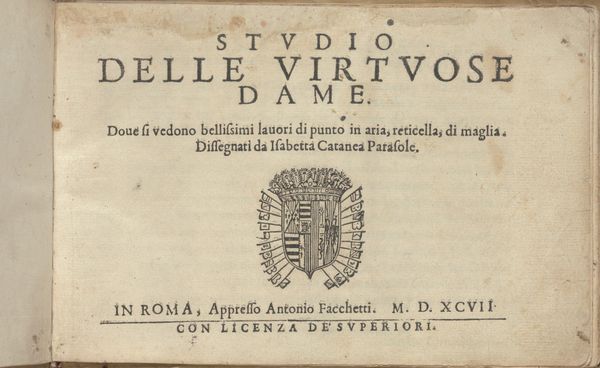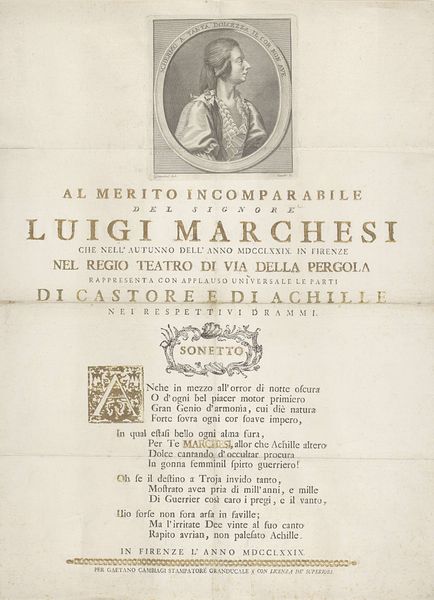
drawing, print, textile, paper
#
drawing
# print
#
book
#
textile
#
paper
#
italian-renaissance
Dimensions: Overall: 5 1/2 x 7 7/8 in. (14 x 20 cm)
Copyright: Public Domain
Editor: Here we have "Fiori di Ricami Nuovamente Posti in Luce," a print from 1591 by Matteo Florimi. It looks like the title page of a book. I am immediately drawn to the delicate, floral border around the text. How do you interpret the visual symbolism here? Curator: This title page resonates with layers of meaning, beyond its stated purpose as a pattern book for embroidery. Notice how the border, indeed floral, evokes both natural beauty and contained space. What might the act of containing these 'flowers of embroidery' within a frame symbolize to you? Editor: Perhaps the frame suggests the domestic sphere, traditionally the realm of women, where such crafts were practiced. Curator: Exactly. The floral motifs, recurring throughout textile history, connect to broader cultural ideas of femininity, nature, and skill. Consider the title – "flowers of embroidery, newly brought to light." How does that suggest something more than just patterns? Editor: It feels like it elevates the craft, giving embroidery the same value and importance as painting or sculpture. Curator: Precisely. The book’s contents offer not just visual designs, but also a kind of social permission. This act of 'bringing to light' signifies empowering women, who create these works, through literacy and artistic instruction. The image contains symbolic meaning that goes beyond the visual pleasure that they bring us. What's your main take away? Editor: I see it's more than just pretty designs, the prints represent knowledge, skill, and an elevated status for women during the Renaissance.
Comments
No comments
Be the first to comment and join the conversation on the ultimate creative platform.
